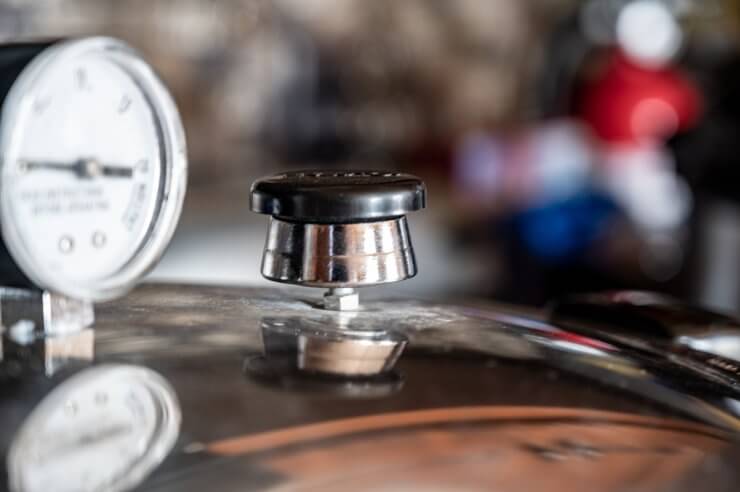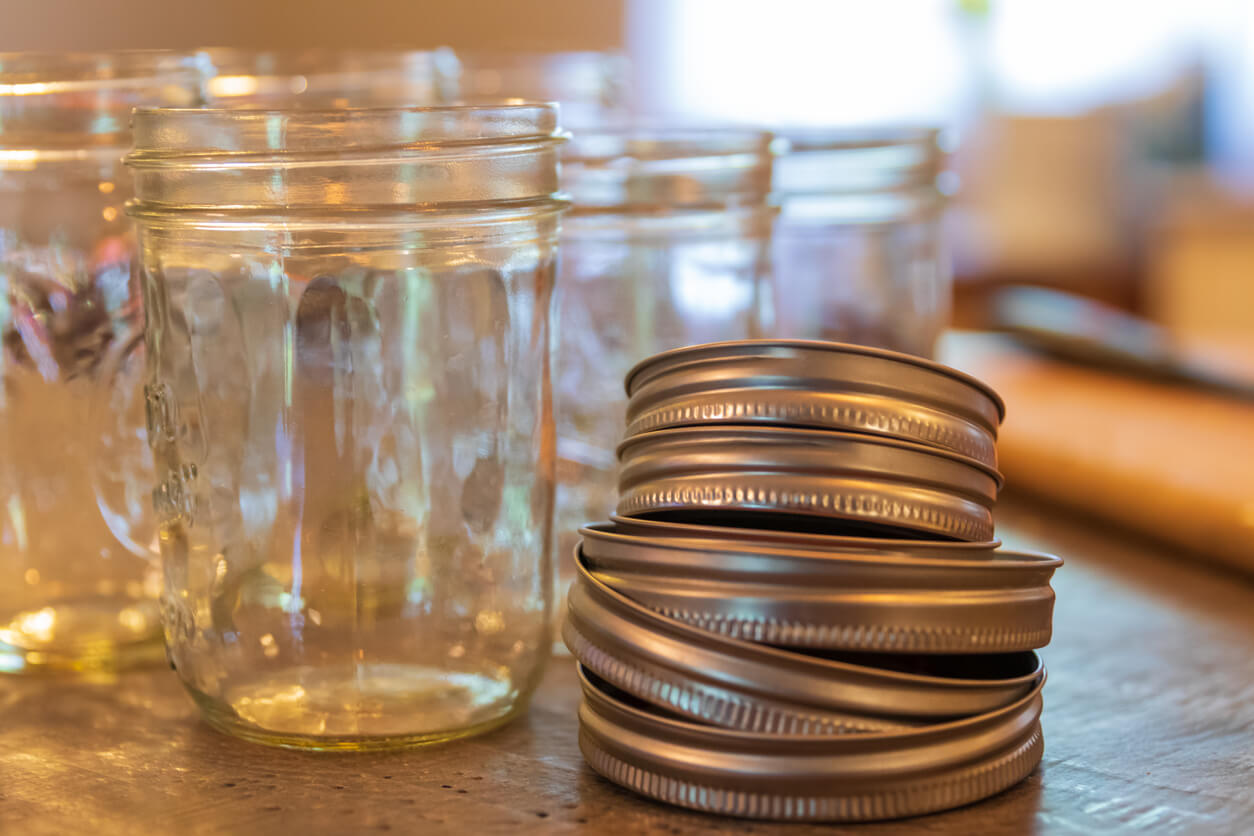
I’ll be the first to say that I love looking in my pantry and seeing jar after jar of canned garden vegetables. Like many gardeners, I enjoy sharing the abundance of nature with friends and neighbors. I also appreciate being able to open a jar of homegrown green beans in February when temperatures are well below freezing. Along the way, I’ve learned a few lessons about storing my canned goods, such as why storing canned food without rings is the way to go.
You may have read or been told that you should store your canned goods without the rings. But why? Because, in my opinion, knowing why you should do something makes it a lot easier to follow through. I’m guessing if you’re here, you also fall into that camp. Kind of like, don’t drink orange juice after you brush your teeth. Good advice, but it doesn’t really stick until you learn why.
Naturally, I looked around and discovered some of the reasons why storing canned food without rings is important. Some of these I knew already; you may, as well. But there were a few surprises. So, let’s take a look at safe storage for canned foods.
Discover 7 top tips for growing, harvesting, and enjoying tomatoes from your home garden—when you access the FREE guide The Best Way to Grow Tomatoes, right now!

Storing canned food without rings: 5 reasons removing rings will keep you safe
First, to be clear, there are three parts to canning jars. There is the glass jar and a two-part lid. The lid consists of a relatively flat disc that covers the jar opening (this is usually what we refer to as the lid), and there is a ring. The ring is the part that fits over the disc and screws onto the jar, keeping the lid in place. These are the pieces I’m referring to in sharing the reasons for storing canned food without rings.
1. Botulism. Really, this is the only reason you need for storing canned food without rings. Botulism is no joke. It’s a deadly toxin that flourishes in low-oxygen environments, such as improperly canned goods. This is one of the primary reasons food safety experts encourage home canners to follow scientifically-tested recipes from a source like the National Center for Home Food Preservation (NCHFP). As for lids and rings, if there is a leak or improperly sealed jar, rings can make it difficult to notice, thereby increasing the risk of severe or even deadly food poisoning.
2. Rust. Another reason for storing canned food without rings is due to the possibility of rust. If moisture gets underneath the rings, rust can develop. Over time, rust can create tiny holes in the lid, allowing botulism spores into the jar. Additionally, even if these small holes don’t lead to botulism growth, they can still lead to food spoilage. And rusty rings and lids are difficult to remove.
3. Easier to see the curvature of the lid. One way you can check that your jars are properly sealed is to look at the lid’s curvature. Bring the jar to eye level and look across the lid. A properly sealed lid should be concave, or a little lower in the center, like a saucer. If the lid is flat or higher in the center, there’s a chance it isn’t sealed correctly.
4. Easier to notice spoilage. One of the first places you might notice spoilage in your canned goods is around the rim of the jar, where small leaks may develop. With rings covering that area, it may be much longer before you notice, meaning there’s more time for bacteria to grow.
5. You might miss your chance to correct a mistake. The NCHFP points out that if you catch an improper seal within the first 24 hours, you still have an opportunity to reprocess it. Alternatively, you can refrigerate your jar and consume the content within a few days. In either case, you have a chance to avoid wasting your delicious, homegrown vegetables. With rings on, you might not notice things like leaks or loose lids in time.
Bonus: Reuse those rings! This reason for storing canned food without rings is purely practical. But your pressure canner will only hold so many jars at once. Granted, when you first buy your jars, they come with lids and rings; however, we all know these things disappear over time. So once you process your first batch of vegetables, and they have the appropriate time to cool, you can remove the rings and use them again for your next batch!
I’ll also mention that when you store your canned goods, most sources suggest limits on stacking them to two levels.
Is there anything you would add to this? I’d love to get your thoughts in the comments.
Note: Food Gardening Network contains links to affiliate websites, including Amazon and Rakuten Affiliate Network, and we may receive a commission for any eligible purchases made by you through links on this page. Any reviews are based on honest reviews of the products.
Discover 7 top tips for growing, harvesting, and enjoying tomatoes from your home garden—when you access the FREE guide The Best Way to Grow Tomatoes, right now!





I’ve been canning for over half a century. I started young helping my mother can up our garden produce, and moved on from there .I have kept jars with the rings and without the rings. I have opted for storage without rings. The rationale is- rings can give a false sense that spoiled food is okay to use because it doesn’t always appear spoiled. The rings can rust over time and makes removing them extremely difficult. More than once I literally had to cut off rings in order to use my hard work for a meal. They can also leave a rust residue on the jars. Reusing rusty rings is not healthy. Sometimes what’s inside of the jar comes into intimate contact with the rings. Rust is not adding anything of benefit to the body- for that matter rust is an oxidative process. A part of decay and breaking down process everything in this world goes through. Our bodies thrive on oxygenation (growing and healing)- the opposite of oxidation(aging and decay). To best preserve the health of our families we all must make sure our home canned products are kept shelf stable in a dark temperature controlled room. The way we process our foods is the biggest factor. Super clean jars and lids and correct processing times are most important. I had some friends about 50 years ago who found and entire case of canned corn (old zinc top lids) which looked as pristine as the day they were canned. They had one jar tested by the ag extension unit who found the food had not grown any bacteria whatsoever! The corn was still appealing to look at. After sitting on a shelf for 50 years I wonder if there was any nutritional value, but it looked wonderful. Back in those days in the countryside there was no pressure canning- just whatever one could do with very lengthy processing times on a wood burning stove using zinc lids. During a time of famine I think it could be consumed. Botulism is virtually everywhere. We can not escape it. We can reduce the numbers by scrubbing and sterilization but as always with a spore producing microbe – some is going to remain behind. We need to always be aware of this fact and observe closely for signs it has woken up from the spore state and started growing again. For this reason I am against rings. Soiled jars will seep, and become unsealed as gases form. I had a friend who did not believe me to scrub her lids. She placed the whole batch into a pot of water. A week or so later I went to visit. Her husband missed work because he had the GI blues. They figured it was the flu. I showed them it was the tomatoes he ate with those unwashed lids. You could see the mold already starting to form on the lid and clearly her fingerprint of where she grasped the lids from the pack and threw them in a pot of hot water. Heating the lids only softens the rubber seals. To properly sterilize before use- she’d have to wash them with soap and a soft cloth hitting every surface of each lid, and them pressure cook them in a pressure cooker @ 15 foot pounds of pressure for 45 minutes. By then the rubber ring will not be effective at sealing and the entire effort worthless. Its the cleansing agent and friction with plenty of clean water that removes surface bacteria. The pressure canning guidelines by the USDA are set up via research using repeatable results. There is a real reason we have specific processing times for certain foods. There is a real reason the temperatures within the jars need to be held at 252 degrees for a certain length of time. The sterilization process comes from pressure and temperature over time. It causes botulism to go into a harmless spore unless it gets reactivated. Acid foods are less of a hazard but the worst case of botulism I have ever read about was some poorly weashed pickled green beans. We not only need to have impeccably clean equipment , but wash our produce well. Each bean is wiped with a sift cloth to remove stuck on dirt after soaking them in cool water. The same goes for everything- cukes- tomatoes apples you name it. I don’t use soap on my produce, but a good soak and a wipe and a fresh clean flushing rinse. While people cringed when I did it I opened a 14 year old jar of perfect looking roast beef- it was delicious! I seldom have any spoilage. If foods are in the early stage of going bad you might still have a little vacuum- my worst nightmare. Tomato products, soups and stews will smell a little like vinegar. Keep in mind inhaling air borne botulism spores can be enough to infect a person. Never taste canned foods before cooking it, with the exception of high acid fruits which are not cooked after the processing. But even high acid food can be lethal if the processing is done in a haphazard manner. Scrub everything keep correct processing times and store the jars in consistent temps in the dark.
IN OUR CANNING CLASSES WITH cALGARY CANNERS, WE WERE TOLD THAT WITHOUT RINGS IF THERE WASN’T A PROPER SEAL, ANY GAS COULD ESCAPE & YOU’D NOTICE WHEN YOU WENT TO USE IT & THE LID WASN’T SEALED ANY MORE. iF THERE WAS A RING ON, THE JAR WOULD EXPLODE AS THE GAS COULD BUILD UP & NOT ESCAPE. ALSO, YOU CAN GET BY WITH MANY FEWER RINGS ON HAND.